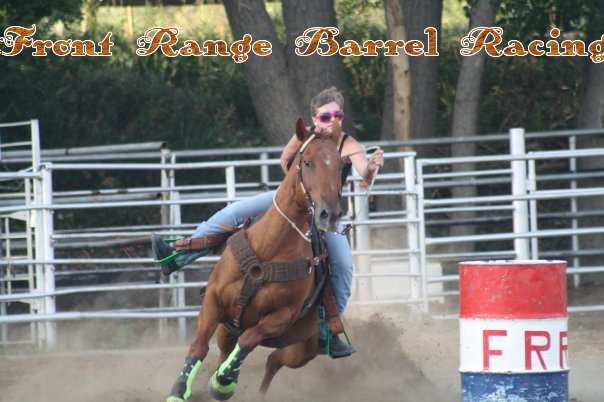Sunday, January 3, 2010
Book review: Fine Tuning Barrel Horses by Jessi Mead
Dynamite does come in small packages and Jessi Mead is no exception. Her book, “Fine Tuning Barrel Horses” is 123 pages of great information. While I wasn’t able to keep up with all the geometry she throws in there, I was able to visually understand exactly what she meant. Mead, at just 5’5” and 130 pounds, is also a small package and ended her 2009 season 15th in the standings for the WPRA Mountain States Circuit and won the Douglas, Wyo., championship title. She has more than 30 years of training barrel horses and many other wins to her name (www.jessimead.com).
Mead has written a book that breaks down her methods, step-by-step-by-step. Seriously, if you come away from this book and you don’t know how she trains a horse, you weren’t reading it! As many horse-people already know, there is always more than one way to train a horse, and if you are looking to train your own, this is a great book. She literally takes you from start to finish in her book and covers a ton of ground in a limited amount of pages. This is a self-published book through an Amazon program but if you weren’t publishing savvy you would never even notice. The book is very professionally laid out and has great photos and diagrams, a great glossy cover and good writing.
Balance and riding posture are two of the first things that Mead hits on and she is very clear in her writing and backs up that writing with illustrations and photos. You cannot help but understand what she is talking about and that’s a great thing in a book. Getting your balance in line with the horse is just one aspect of teaching a horse the pattern and she moves on to “common misconceptions and mistakes.” One mistake that she points out that almost anyone can agree with is not to whip your horse repeatedly. Instead, she says, to give your horse the chance to respond to your command before you do it again, if you need to at all. Another “mistake” that she lists is the ubiquitous advice to “look at the next barrel.” And Mead is not the only trainer out there to explain that looking at the next barrel really accomplishes nothing other than throwing your horse’s balance off kilter.
Mead moves on to the actual barrel pattern and breaks it down with numbers. A standard pattern, according to AQHA rules, is 495 feet and in those 495 feet a horse has to run the pattern in 17.0 flat, “making ever three feet that your horse runs worth about one-tenth of a second. . .” Clearly every tenth of a second counts. And with the number of talented trainers and riders out there, understanding exactly how every step affects your time is crucial to getting better and faster.
She moves on to the barrel pocket and tells you how to adjust your pocket for the size of your horse, how to measure the pockets and how to mark the pockets. Moving on she covers the four points in each barrel pocket and talks about checking and rating your horse based on the horse’s personality (chargy/run or rated/push style).
Moving into the actual training of the horse on the pattern she again provides excellent visuals for even the most greenhorn racers to follow. This book isn’t just for a trainer to train with but for a newer racer who needs to see the visuals in more than one way to learn how and when and why. I could also see this being very handy for a trainer who gives lessons and wants to break down the pattern for the newbie. Mead goes on to talk about collection and controlled speed, leg commands, flying lead changes (she prefers to teach all her barrel horses the pole pattern to make flying lead changes more fun and interesting for them) and she has several exercises in the book for teaching rate and turns. Mead even goes so far as to explain and illustrate “reading your tracks” so that the reader can determine just where a horse is going wrong.
The book closes with a chapter on the actual competition and tips on how to get it done. There are no wasted words in her book. She will not be reading about breeding the barrel horse or her long list of where she has been and how she got to where she is, and by all accounts, she’s not a world champion. But there are a lot more effective trainers than there are world champions in the world and what she has to say is said very well and explained in-depth. The book has something for every level of rider, but if you’re new to barrel racing I very much think this book will help you get better and faster in less time. It’s a great book to add to your collection (or even to start your collection).
Subscribe to:
Comments (Atom)



